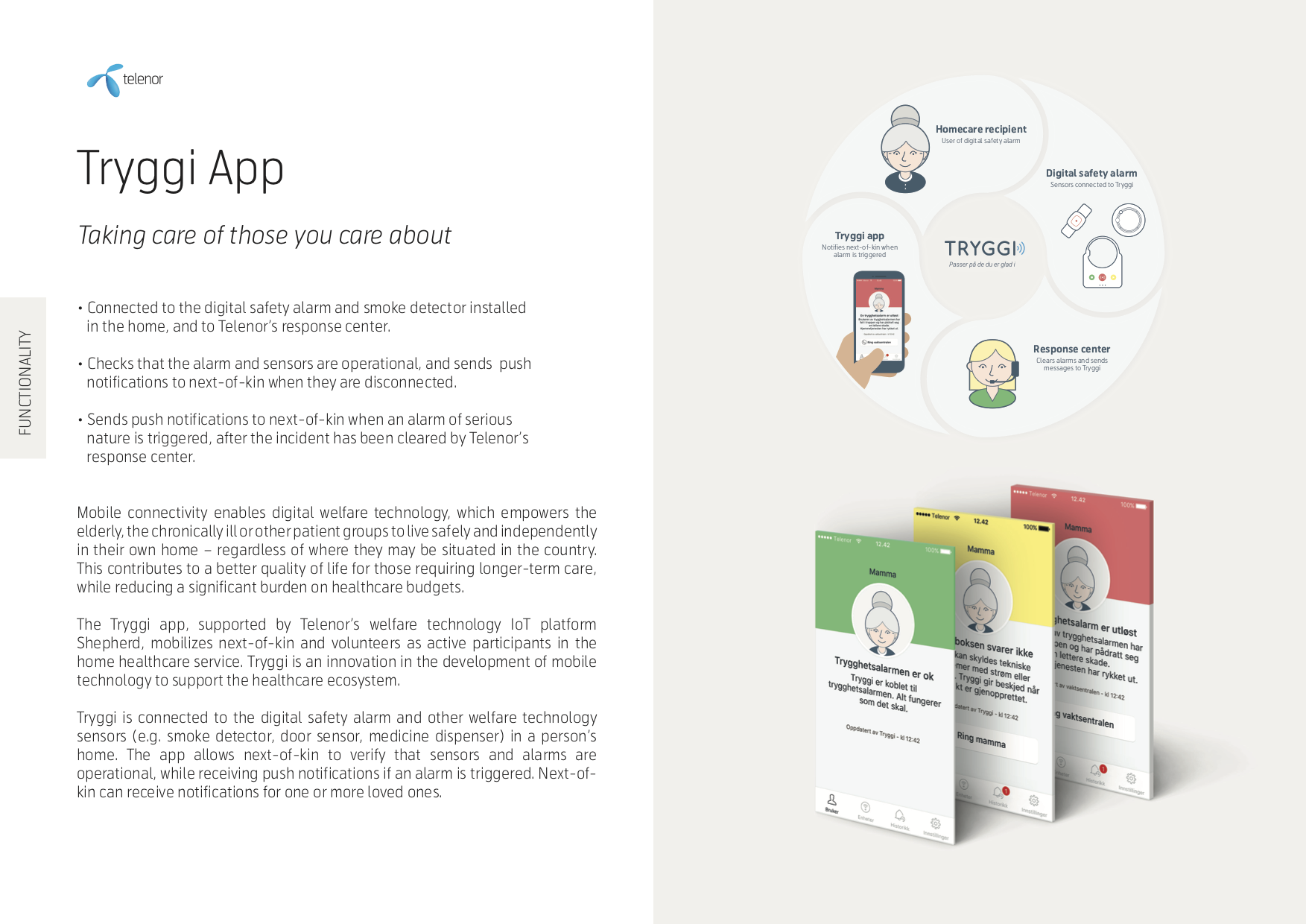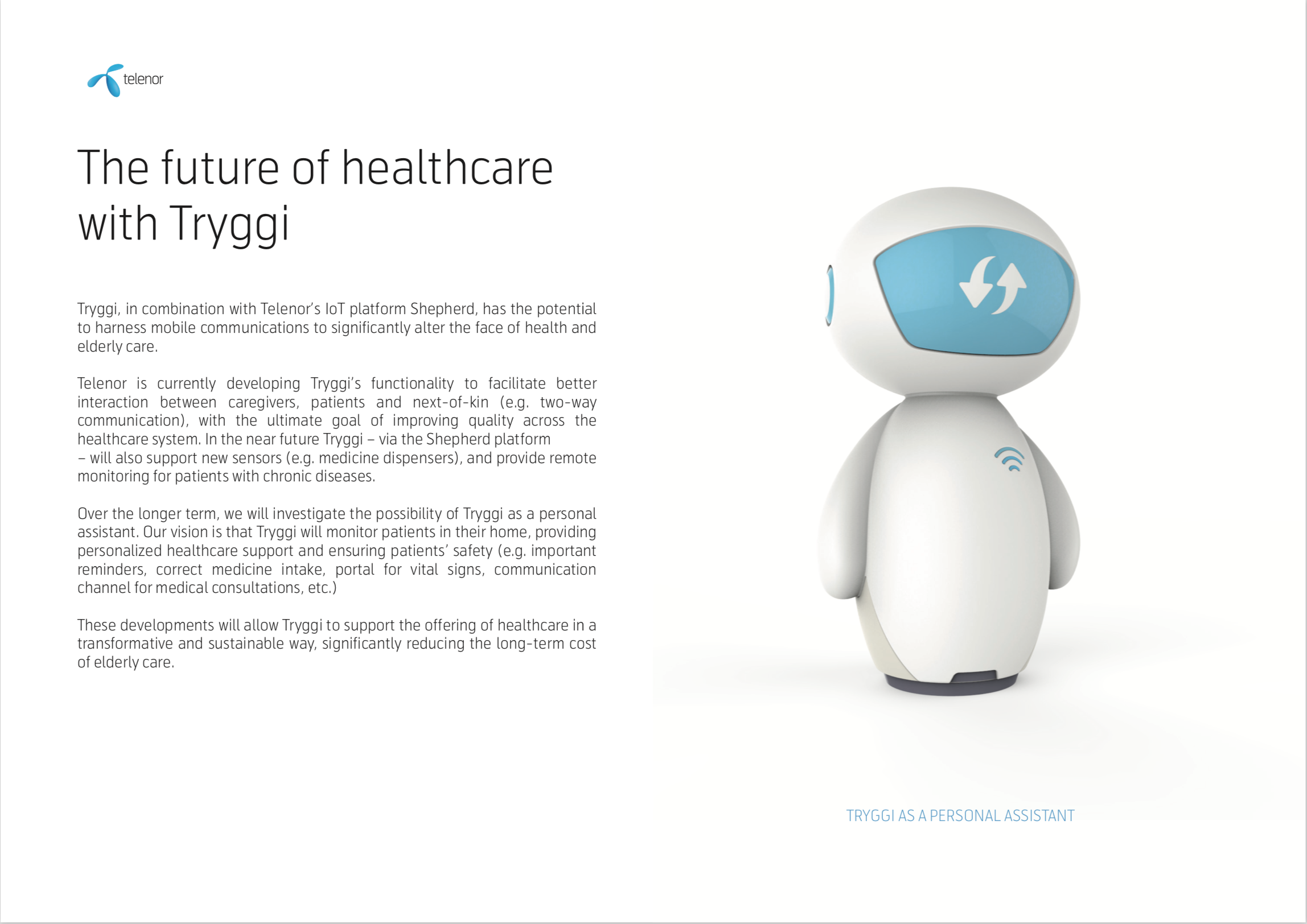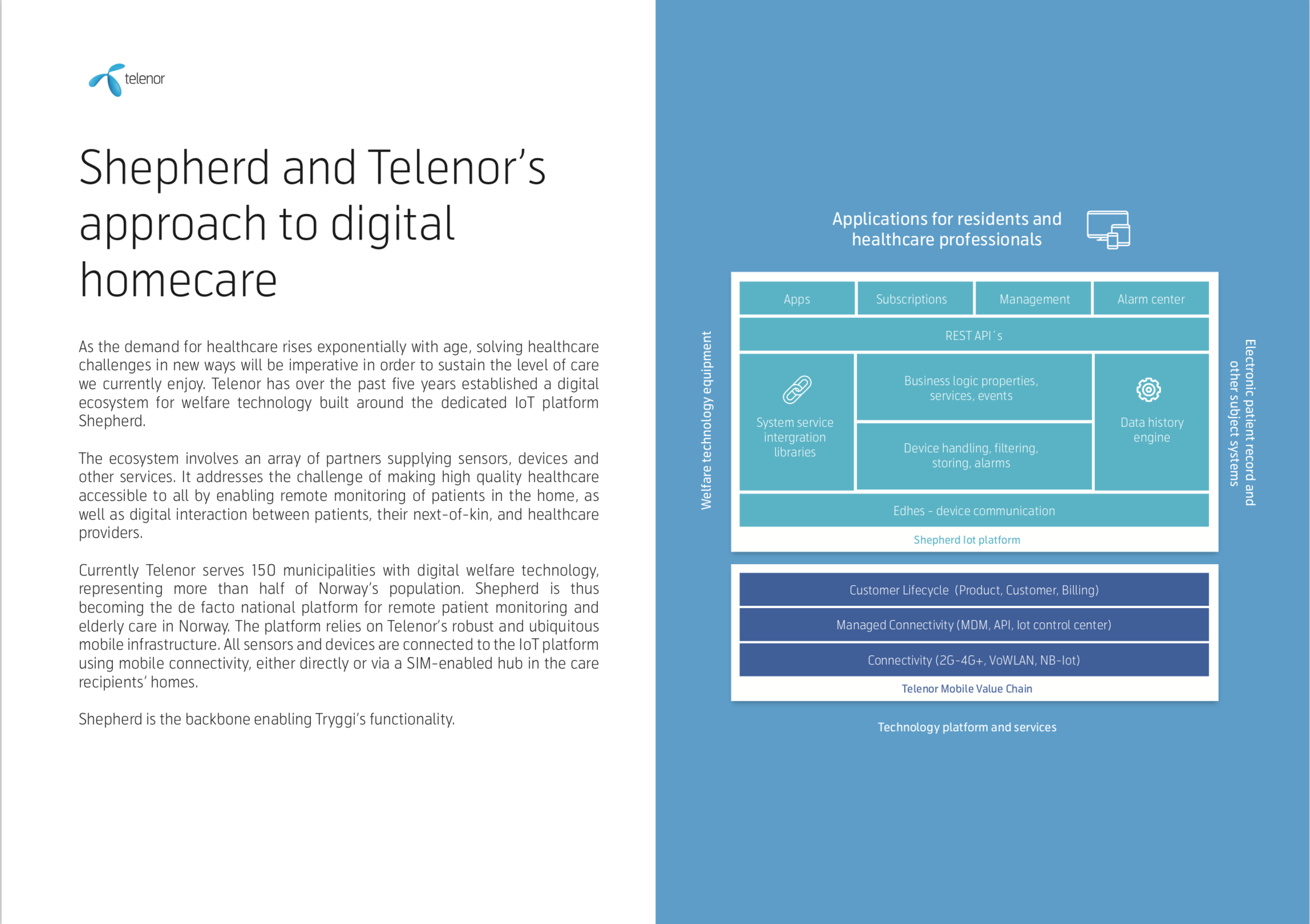Tryggi
Tryggi is an IoT service designed for the caregivers of users with a digital safety alarm. The app ensures that the equipment is always connected and alerts caregivers if an alarm is triggered. Tryggi enhances safety and freedom for both caregivers and users.
About the service
Tryggi is an app for caregivers of elderly individuals living at home with a digital safety alarm from the municipality. The service checks that the safety alarm and any other home sensors are connected and functioning properly. It communicates with the municipality's monitoring center, which receives alarms and notifies caregivers if the equipment appears to be malfunctioning or if a serious alarm is triggered. Participation in the service is voluntary. Tryggi provides greater safety and more freedom for both caregivers and those using the safety alarm.
About the project
Background
There is a global trend where an aging population will pose challenges for the upcoming generation. By 2030, there will be twice as many 80-year-olds in Norway. To maintain welfare at the same level as today, we must offer health services in new ways.” - Telenor.
The Tryggi project, part of Telenor's e-health initiative, explored how IoT and welfare technology could help elderly individuals and those needing care in Norwegian municipalities enjoy a simpler and safer everyday life at home. The project aimed to develop a digital service that would enhance the ability to detect when a user requires assistance, such as identifying if a person has fallen or is wandering at night.
Key questions
How can welfare technology enable elderly individuals to live at home longer?
How can it be made easy and safe for users to inform home care services when they need assistance?
Target audience
Caregivers of users with safety alarms living alone at home.
Users of safety alarms who wish to remain at home longer.
Goal
Facilitate longer home stays for the elderly through digitalization and welfare technology in elder care.
-

Safety alarm
The safety alarm consists of an alarm box placed in the user's home, along with a corresponding alarm button equipped with a radio transmitter. The alarm button can be designed as jewelry or a wristwatch
-

Tryggi app
Tryggi is linked to the digital safety alarm, smoke detector, and Telenor's response center. The app alerts caregivers in case of connection issues or triggered alarms.
-

Response center
The safety alarm is connected to a response center. Telenor's Response Center receives the alarm when it is triggered and communicates with the home care services if assistance is needed.
-

User
There are various types of alarms and sensors that municipalities can offer their residents, but the home safety alarm is the most common.
Functionality
By providing caregivers with direct information, the app can also facilitate better and more direct collaboration between the municipality's home care services and the caregivers. The app is connected to Telenor's health platform, which in turn is linked to the municipal response center service along with the safety alarm box. Additional equipment, such as medication reminders, can also be connected to the system, enabling even better information flow between caregivers and home care services.
If the safety alarm is triggered, a message is immediately sent to the response center. They then contact the user of the safety alarm to assess the appropriate action. If assistance is requested, a notification (push message) will simultaneously be sent to the caregiver's phone through the Tryggi app.
If there is an issue with the equipment, a notification will also be issued. This applies to any additional equipment as well. This way, caregivers can be assured that everything is functioning properly without needing to directly contact the municipality or home care services.
Tryggi Service Blueprint
Telenor Talks
During Telenor Talks and the Nobel Peace Prize concert, the Tryggi service and robot were showcased as one of three major initiatives, demonstrating how service design and a user-driven innovation process can yield results.
My role as a lead designer
As the lead service designer, I guided the team through various design phases from insight to implementation. During the initial project phase, I was responsible for creating a design brief and planning the interdisciplinary process, which included product owners, business developers, project managers, developers, and designers.
In a remarkably short time at Telenor, we developed a Minimum Viable Product (MVP) based on real user insights within 90 days. We frequently tested hypotheses with both users and stakeholders. Using various types of prototypes allowed us to test both the customer journey and functionality with end-users and service providers in the early stages.
After the development phase, we conducted a pilot in collaboration with Grue municipality and Ullern district, working closely with users and stakeholders throughout the pilot to ensure continuous improvements based on insights gathered, all aimed at delivering an excellent user experience. In spring 2017, Telenor launched Tryggi 1.0, an app that notifies caregivers of users with digital safety alarms.
In addition to leading the design process, I developed the visual identity. Taking the initiative, I conceptualized the Tryggi robot—a personal IoT assistant. Due to significant interest from the Norwegian Directorate of Health and the EU Commission, Telenor's Business Division decided in winter 2018 to create a prototype of the robot.
In a four-week intensive collaboration with TellU, we successfully developed an IoT prototype. Tryggi was showcased as one of three major initiatives during Telenor Talks and the Nobel Peace Prize concert, demonstrating how service design and a user-driven innovation process were employed to develop a solution that meets future technological demands in e-health.
The Tryggi project was referred to as a “best practice” by Berit Svendsen, the CEO of Telenor Norway, and remains a prime example of a user-driven innovation process executed by an interdisciplinary team.








